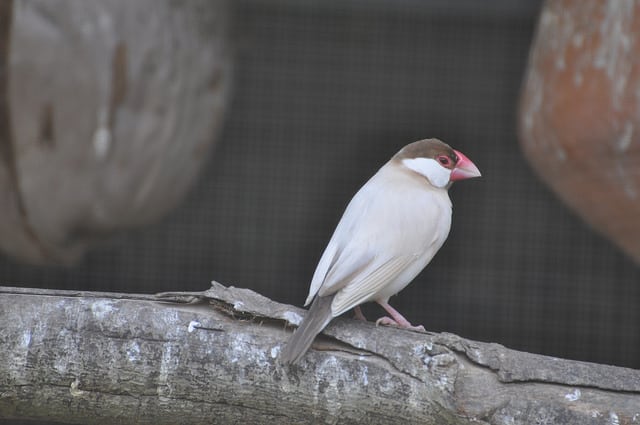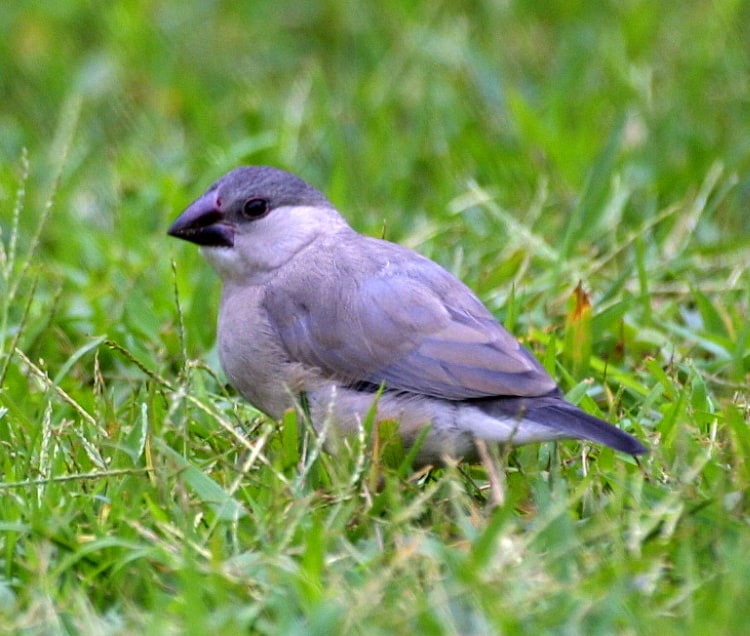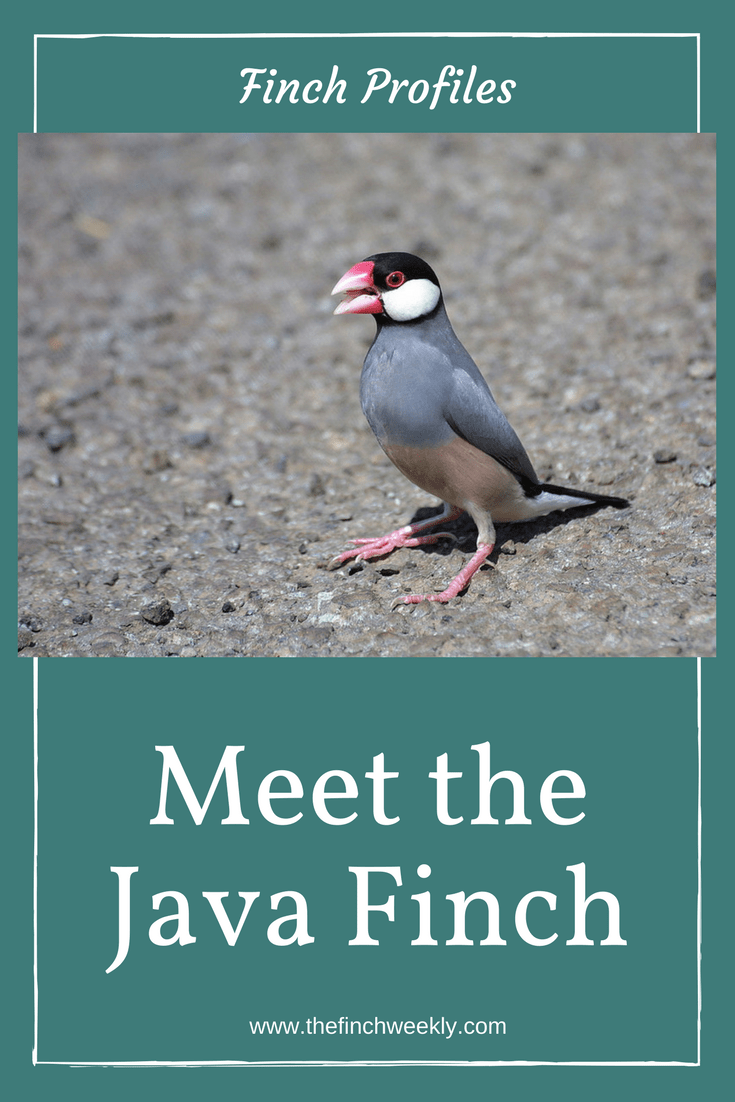The Java Finch is a reasonably large finch with an impressive bright red beak and a stocky body shape and size that makes it look like one of the tough guys of the Estrildid family tree. But this is a bird who has a nasty bite but doesn’t seem to use it all that often. Here is a profile of the Java Finch.
Meet the Java Finch
The Java is also known as the Java sparrow as well as the Java rice bird. Its name does indicate where it comes from as it is found across Java as well as Bali and Bawean in Indonesia. It is currently placed in the Lonchura family with the mannikins and silverbills with the Latin name Lonchura oryzivora but many experts think it and the closely related Timor sparrow should be in a family of their own.
Javas are sturdy looking birds, around 5 to 5.5 inches in length. Their feathers have a silky look to them and while they may not be the brightest of shades, they are eye catching with their black head, white cheeks and black tail feathers. Their body is a grey shade with a beige underbelly and black feathers on the wing. Sexes are virtually identical.

As well as the grey bodied wild type of the bird, there are also a number of mutations that have developed in captivity.
- fawn or Isabel involves a brownish shade in place of the grey and is further subdivided into red-brown and beige-brown depending on the darkness of the colour
- silver or opal reduces the grey to a silver shade and the black areas to a dark silver
- opal Isabel is a combination of silver and fawn and has a silvery white body colour with silver head and other areas
- white comes in both red eye (albino) and dark eyed versions – all other colours on the bird vanish into pure while feathers
- pastel or dilute makes the colours of the bird a little lighter than the wild type
- cream or pastel fawn is a combination of the fawn and the pastel where the darker areas are a gingery brown while the rest is almost white
- pied is the same as with other species, where there are random patches of white across the body and normally appeared on wild type birds.
For great pictures of all these mutations, check out http://www.sjdjavas.co.uk/colours.htm
Keeping Javas
Despite that tough look to them, Javas are relatively friendly with other species of birds though will sometimes bicker with each other. This means they can live in a mixed aviary or in large flight cages as well as good sized cages. Much depends on what they have been raised in as to how they adapt to different surroundings.
In terms of diet, they will eat both a standard foreign finch mixture and also a parakeet mixture as they enjoy some of the larger seeds, especially oats. Egg food is usually taken easily as well as green food such as kale and spinach as well as fruits such as apple. Calcium should always be available such as cuttlefish, grit or oyster shell. For all their name and reputation says they are rice eaters, many breeders have found they rarely bother with it much.
Sexing
One of the biggest problems with Javas and any other birds that cannot be visually sexed is getting a pair. As with most finches, one sure sign is when a bird signs – this is definitely a male. But catching them singing can be tricky so this isn’t always the easiest method to use.
Another suggestion is that the shape of the beak and the eye ring can be used to sex the birds. While not guaranteed, many breeders do use this system. The colour of the beak is one indicator, with the male’s being bright red and the red area stretching further down the beak that the females. A male’s eye ring is often more pronounced and brighter than a female, particularly when in breeding condition.
A third theory draw a line from the centre of the beak up through the eye. If the line is along the bottom of the eye, the this is a male bird while if the line cuts across the bottom of the eyeball then this is a hen.
In mutations, there can be a difference in the head colour of the birds, with males having a darker head colour that females. In wild types, because the head colour is black then this doesn’t really show through.
Breeding
Java Finch are said to be quite prolific breeders (I hope to find this out for myself this year) and can have clutches of 6-8 chicks at one time, though an ideal size is around five. They like different nest boxes depending on what they themselves have been reared in so offering different options never hurts. Standard and larger finch boxes are a good idea, being they are good sized birds. They aren’t the best nest builders and tend to just add a little material to the box and get on with it.

